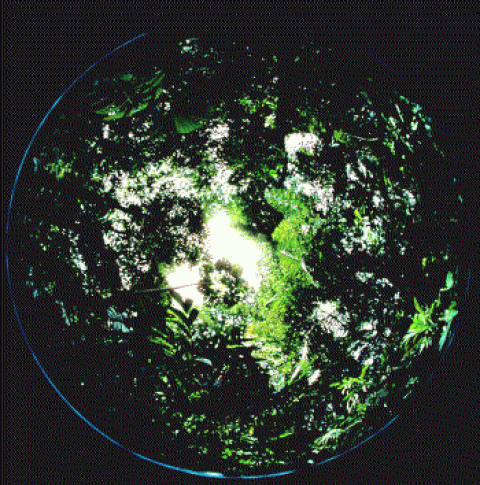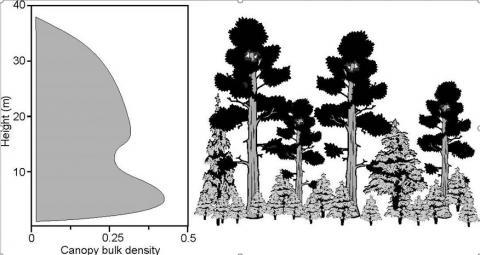An extensive exploration of field, analysis, and modeling methods to describe and quantify fuels for operational fire management.
This study will develop, evaluate, and compare methods or approaches to measure canopy fuels characteristics and incorporate canopy fuel information into landscape-scale land use and planning processes. Specifically, we will develop and test techniques for canopy fuel data collection using a wide variety of methods that will eventually be implemented into fire management. First, we will destructively sample all canopy biomass by crown fuel components using standard biomass sampling techniques harvesting trees at four cutting entries. Prior to each cut, we will estimate several crown fuel characteristics using five indirect methods (LAI-2000, CID-PCA, Ceptometer, Spherical Densiometer, Hemispherical Photography). We will also conduct a standard timber inventory on the sampled stand so that we can develop and verify a consistent method for inventorying canopy fuels that can be used across agency boundaries. The inventory method will allow managers to more accurately assess the effects of fuel treatments on canopy fuel characteristics and expected fire behavior. We will also establish a consistent procedure for canopy fuel characterization. Products of this research will be of direct and immediate benefit to wildland managers in federal agencies for mapping fuels, assessing hazard and risk, designing hazard mitigation treatments, and simulating fire behavior and effects. A consistent method of characterizing canopy fuels is particularly important in landscape-level planning projects that cross administrative or ecological boundaries.
Goals and Objectives
- Develop and test alternate indirect methods (timber inventory and LAI measurement) of quantifying canopy fuels against direct measurement (destructive sampling)
- Document the vertical, horizontal, and size-class distribution of canopy fuels for several sample stands
- Document the effects of several levels of treatment on canopy fuels
- Develop a canopy fuels photo guide to help wildland managers "develop and eye" for canopy fuels
- Create a computer program so that fire managers and silviculturists can calculate important crown fuel characteristics to evaluate impacts of potential treatments on canopy fuels.

